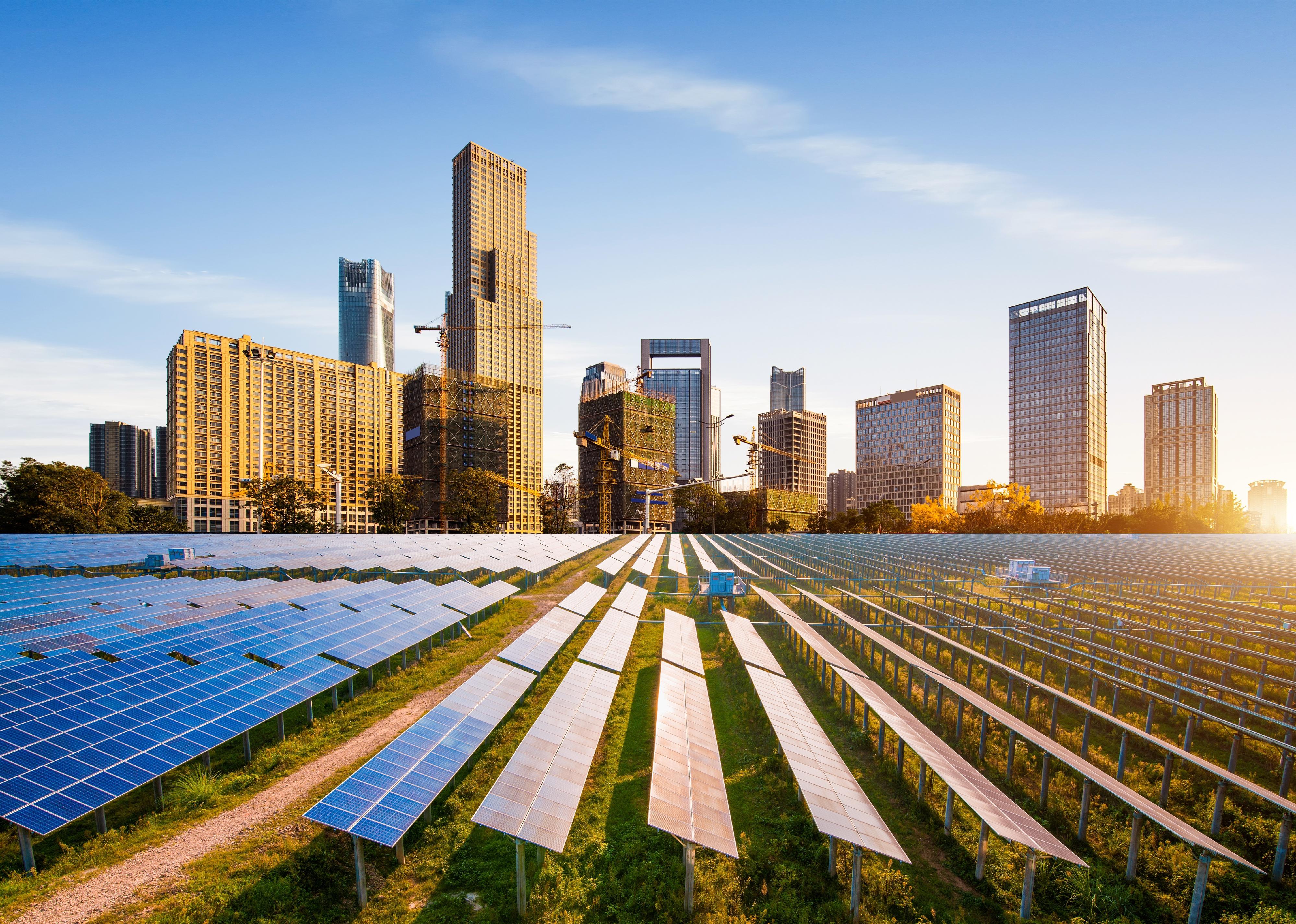
This story originally appeared on Calgary.com and was produced and distributed in partnership with Stacker Studio.
The 38 greenest cities in North America
Greening a city isn't just good press. According to the U.S. Federal Emergency Management Agency, a more climate-conscious city supports economic growth by creating jobs, increasing property values, and improving public health factors such as better disease outcomes. By committing to improving air and water quality, cities can reduce their residents' exposure to harmful pollutants. Designing more green spaces can welcome cooler summers, reduce the risk of heat-related illness; and bring forth additional recreation spaces to the community, increasing opportunities for both physical activity and social engagement.
In its June 2021 report on building resilient nature-based local communities, FEMA reported that Los Angeles added more than 2,000 jobs due to a $166 million investment in nature-based solutions from 2012 to 2014. Such greening investments have demonstrated immediate and long-term benefits to the environment and populace alike. Another notable example from Massachusetts showed that, rather than build a costly treatment facility for the Quabbin and Wachusett Reservoirs, the Massachusetts Water Resources Authority instead invested $130 million on nature-based solutions to protect the more than 20,000 acres of watershed that drain into the reservoirs. The move saved an estimated $4 million per year on maintenance costs for a treatment facility and kept local drinking water clean in the bargain.
Nature-based solutions are defined as sustainable planning, design, environmental management, and engineering practices that weave natural features or processes into the built environment. These solutions promote adaptation and resilience, enlist natural solutions to combat climate change, reduce flood risks, restore and protect wetlands, and more.
So which cities are prioritizing policies toward a healthier and more sustainable environment? Calgary.com compiled a list of the greenest cities in North America according to the Carbon Disclosure Project, an international nonprofit that tracks the environmental impact of companies and municipalities around the world. The cities in this list were part of the CDP's 2021 A List, an annual ranking of cities based on their climate initiatives. They include two districts (Washington, D.C. and the district of Saanich, British Columbia) and are listed in alphabetical order.
To make the list, each city must have a publicly available climate action plan, including emissions reduction and renewable energy targets. The cities were also required to complete climate risk and vulnerability assessments and show measured progress toward achieving their goals. More than 1,000 cities worldwide report to the CDP, 95 of which made the A List. The following are the greenest.

Ann Arbor, Michigan
- Energy breakdown:
--- Coal: 49.7%
--- Gas: 17.2%
--- Oil: 0.3%
--- Nuclear: 21.1%
--- Hydro: 0.3%
--- Bioenergy (biomass and biofuels): 1.4%
--- Wind: 9.8%
--- Geothermal: 0.0%
--- Solar (photovoltaic and thermal): 0.0%
--- Waste to energy (excluding biomass component): 0.3%
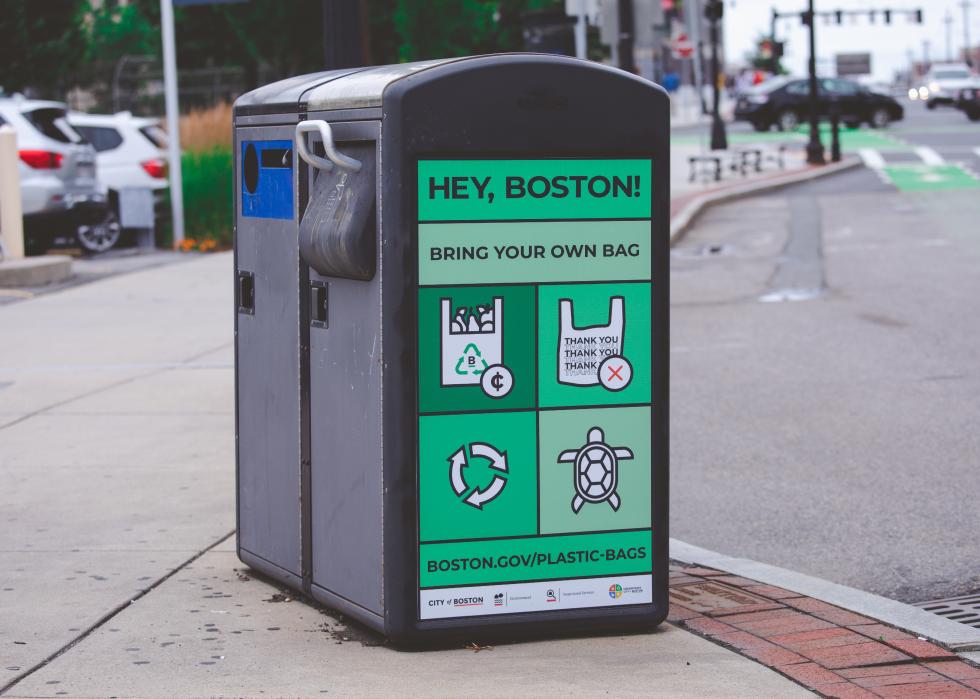
Boston, Massachusetts
- Energy breakdown:
--- Coal: 0.4%
--- Gas: 39.0%
--- Oil: 0.3%
--- Nuclear: 25.0%
--- Hydro: 7.0%
--- Bioenergy (biomass and biofuels): 6.0%
--- Wind: 3.0%
--- Geothermal: 0.0%
--- Solar (photovoltaic and thermal): 0.0%
--- Waste to energy (excluding biomass component): 0.0%
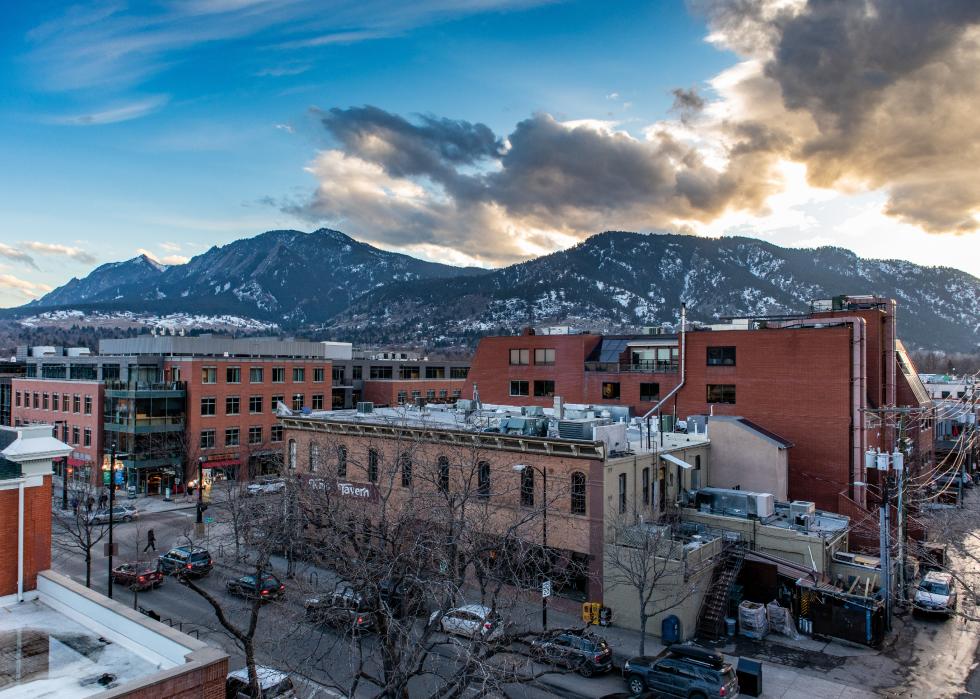
Boulder, Colorado
- Energy breakdown:
--- Coal: 33.0%
--- Gas: 37.0%
--- Oil: 0.0%
--- Nuclear: 0.0%
--- Hydro: 1.0%
--- Bioenergy (biomass and biofuels): 0.0%
--- Wind: 25.0%
--- Geothermal: 0.0%
--- Solar (photovoltaic and thermal): 0.0%
--- Waste to energy (excluding biomass component): 4.0%
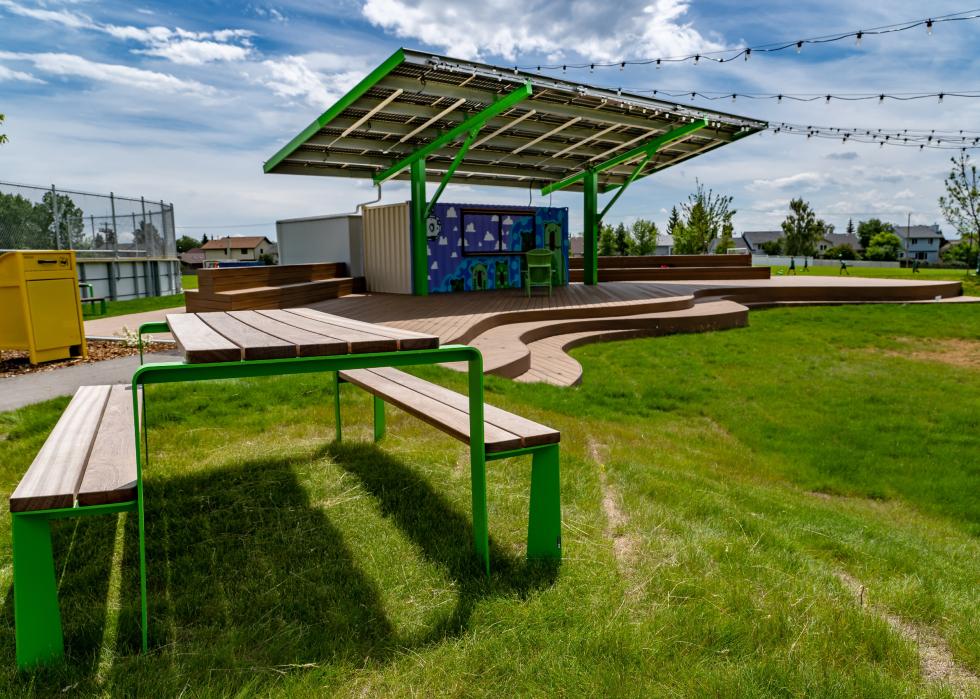
Calgary, Alberta
- Energy breakdown:
--- Coal: 36.0%
--- Gas: 48.0%
--- Oil: 0.0%
--- Nuclear: 0.0%
--- Hydro: 6.0%
--- Bioenergy (biomass and biofuels): 0.0%
--- Wind: 9.0%
--- Geothermal: 0.0%
--- Solar (photovoltaic and thermal): 0.0%
--- Waste to energy (excluding biomass component): 0.0%
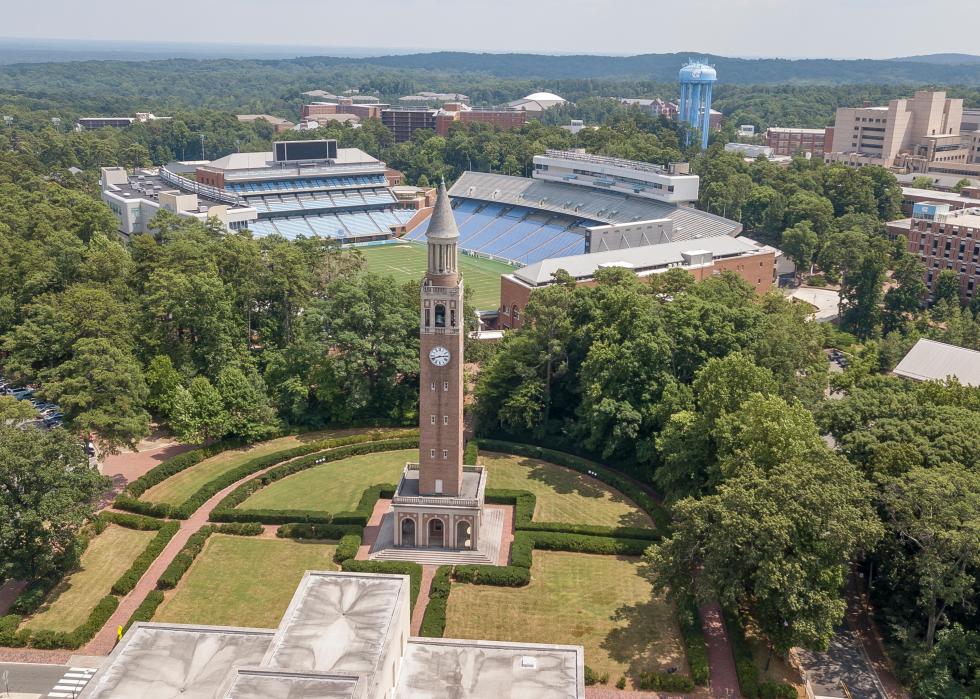
Chapel Hill, North Carolina
- Energy breakdown:
--- Coal: 22.0%
--- Gas: 39.0%
--- Oil: 0.0%
--- Nuclear: 37.0%
--- Hydro: 0.5%
--- Bioenergy (biomass and biofuels): 0.0%
--- Wind: 0.5%
--- Geothermal: 0.0%
--- Solar (photovoltaic and thermal): 0.0%
--- Waste to energy (excluding biomass component): 1.0%

Cincinnati, Ohio
- Energy breakdown:
--- Coal: 49.8%
--- Gas: 16.7%
--- Oil: 0.4%
--- Nuclear: 27.6%
--- Hydro: 0.9%
--- Bioenergy (biomass and biofuels): 0.6%
--- Wind: 3.2%
--- Geothermal: 0.0%
--- Solar (photovoltaic and thermal): 0.0%
--- Waste to energy (excluding biomass component): 0.1%
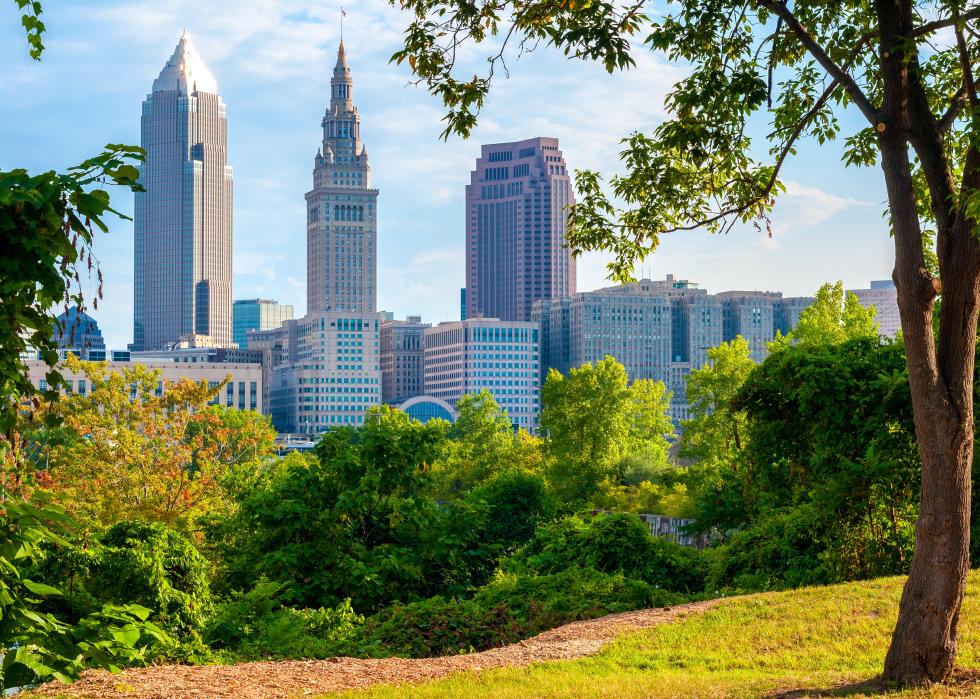
Cleveland, Ohio
- Energy breakdown:
--- Coal: 34.9%
--- Gas: 25.3%
--- Oil: 0.0%
--- Nuclear: 30.5%
--- Hydro: 5.7%
--- Bioenergy (biomass and biofuels): 0.4%
--- Wind: 2.3%
--- Geothermal: 0.0%
--- Solar (photovoltaic and thermal): 0.0%
--- Waste to energy (excluding biomass component): 0.0%
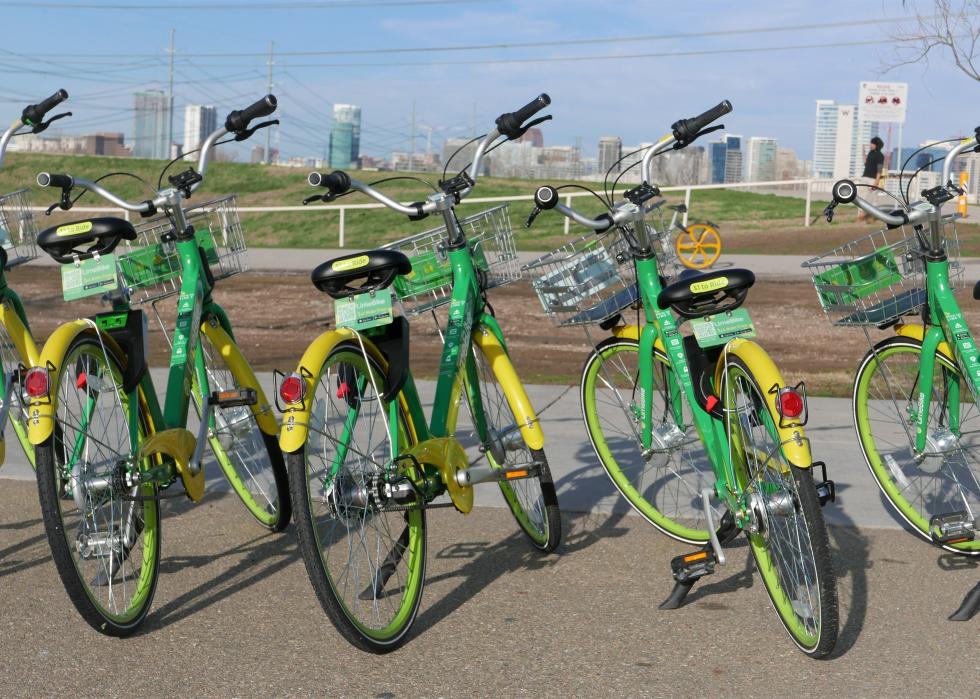
Dallas, Texas
- Energy breakdown:
--- Coal: 18.0%
--- Gas: 45.7%
--- Oil: 0.0%
--- Nuclear: 11.0%
--- Hydro: 0.2%
--- Bioenergy (biomass and biofuels): 0.1%
--- Wind: 23.0%
--- Geothermal: 0.0%
--- Solar (photovoltaic and thermal): 0.0%
--- Waste to energy (excluding biomass component): 2.0%

Encinitas, California
- Energy breakdown:
--- Coal: 0.0%
--- Gas: 54.0%
--- Oil: 0.0%
--- Nuclear: 0.0%
--- Hydro: 0.0%
--- Bioenergy (biomass and biofuels): 2.0%
--- Wind: 16.0%
--- Geothermal: 0.0%
--- Solar (photovoltaic and thermal): 0.0%
--- Waste to energy (excluding biomass component): 18.0%

Fayetteville, Arkansas
- Energy breakdown:
--- Coal: 22.3%
--- Gas: 44.2%
--- Oil: 1.1%
--- Nuclear: 0.0%
--- Hydro: 5.0%
--- Bioenergy (biomass and biofuels): 1.5%
--- Wind: 25.1%
--- Geothermal: 0.0%
--- Solar (photovoltaic and thermal): 0.0%
--- Waste to energy (excluding biomass component): 0.4%
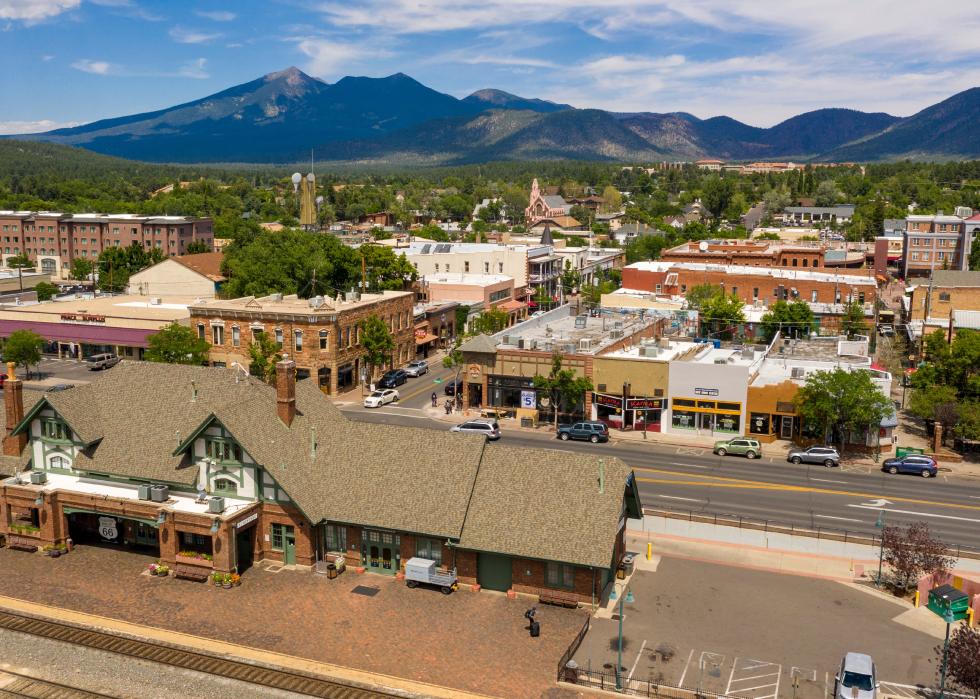
Flagstaff, Arizona
- Energy breakdown:
--- Coal: 20.8%
--- Gas: 35.0%
--- Oil: 0.0%
--- Nuclear: 29.2%
--- Hydro: 0.0%
--- Bioenergy (biomass and biofuels): 0.5%
--- Wind: 1.7%
--- Geothermal: 0.3%
--- Solar (photovoltaic and thermal): 0.3%
--- Waste to energy (excluding biomass component): 12.2%

Fort Collins, Colorado
- Energy breakdown:
--- Coal: 64.2%
--- Gas: 0.0%
--- Oil: 0.0%
--- Nuclear: 0.0%
--- Hydro: 19.3%
--- Bioenergy (biomass and biofuels): 0.0%
--- Wind: 11.8%
--- Geothermal: 0.0%
--- Solar (photovoltaic and thermal): 0.0%
--- Waste to energy (excluding biomass component): 0.6%
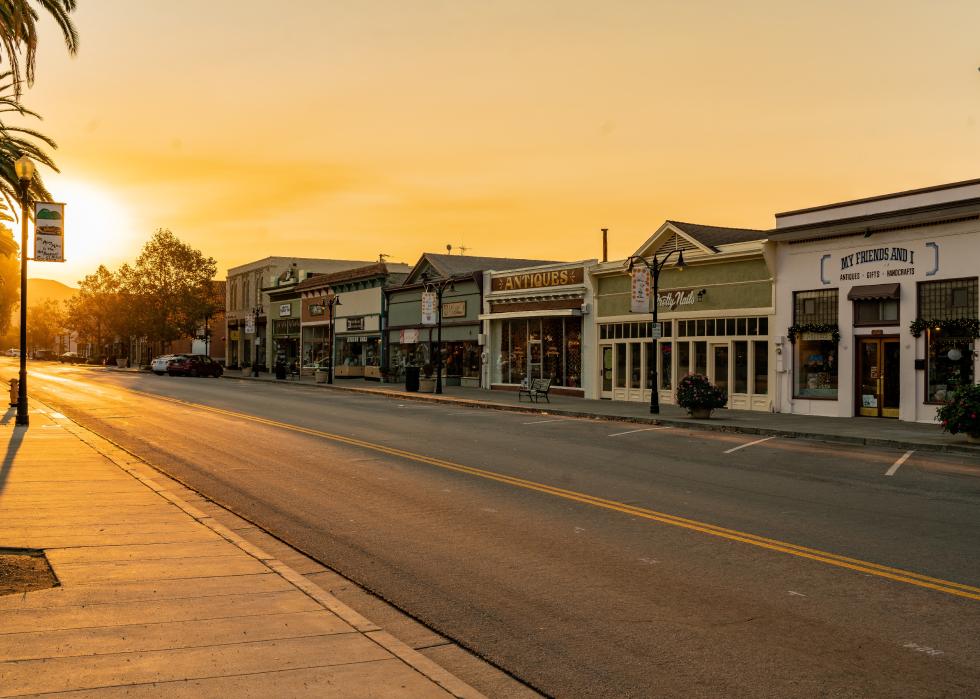
Fremont, California
- Energy breakdown:
--- Coal: 0.0%
--- Gas: 0.0%
--- Oil: 0.0%
--- Nuclear: 1.0%
--- Hydro: 30.0%
--- Bioenergy (biomass and biofuels): 4.0%
--- Wind: 36.0%
--- Geothermal: 12.0%
--- Solar (photovoltaic and thermal): 12.0%
--- Waste to energy (excluding biomass component): 4.0%
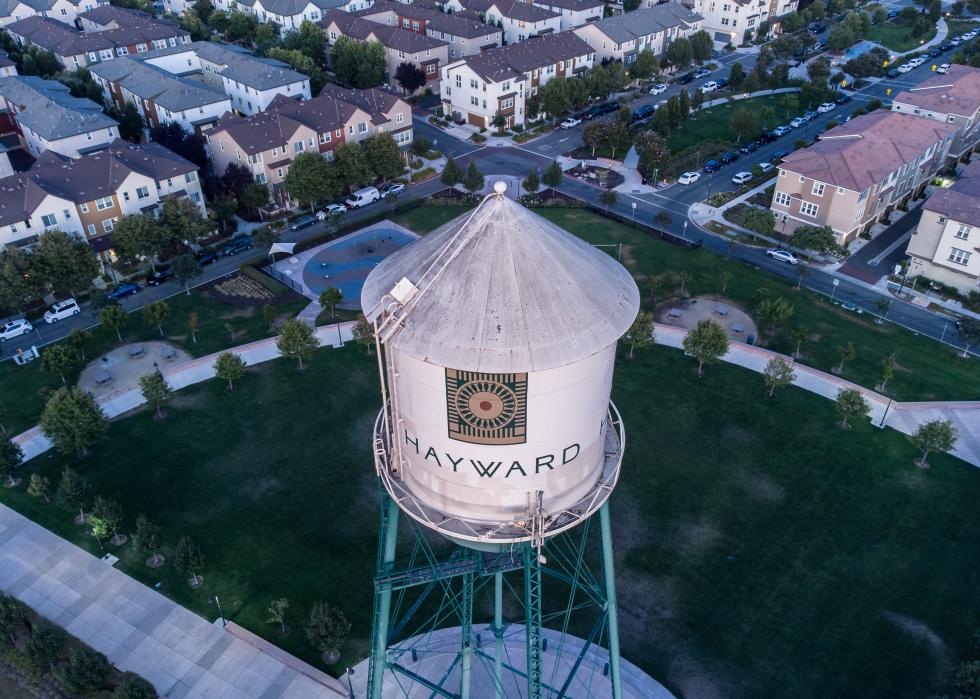
Hayward, California
- Energy breakdown:
--- Coal: 0.0%
--- Gas: 0.0%
--- Oil: 0.0%
--- Nuclear: 0.0%
--- Hydro: 25.0%
--- Bioenergy (biomass and biofuels): 0.0%
--- Wind: 37.0%
--- Geothermal: 0.0%
--- Solar (photovoltaic and thermal): 0.0%
--- Waste to energy (excluding biomass component): 38.0%
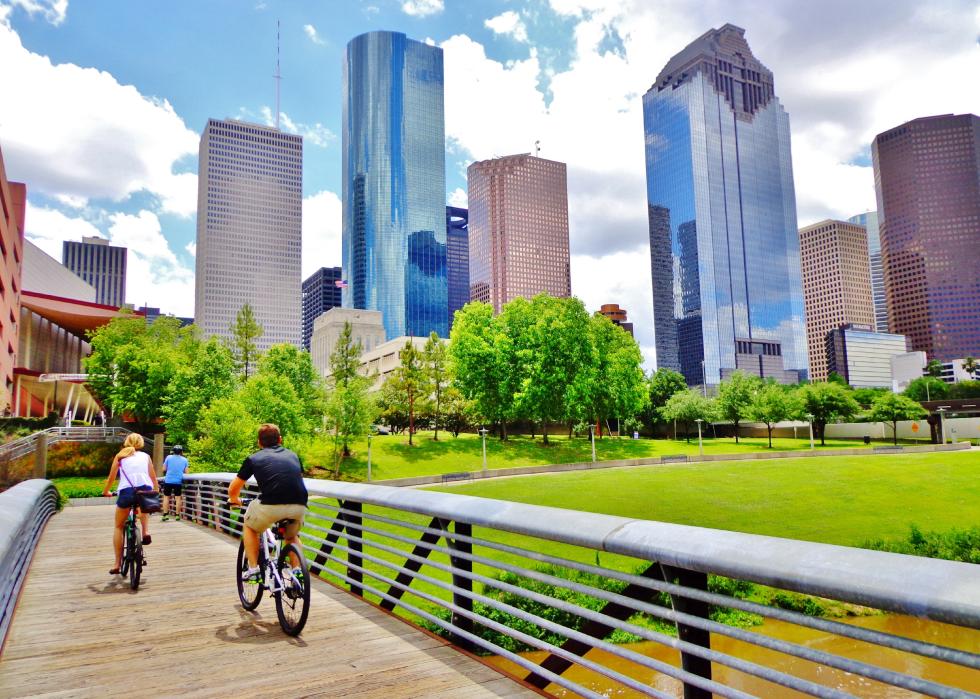
Houston, Texas
- Energy breakdown:
--- Coal: 18.6%
--- Gas: 51.1%
--- Oil: 0.0%
--- Nuclear: 9.9%
--- Hydro: 0.3%
--- Bioenergy (biomass and biofuels): 0.2%
--- Wind: 18.3%
--- Geothermal: 0.0%
--- Solar (photovoltaic and thermal): 0.0%
--- Waste to energy (excluding biomass component): 1.0%

Indianapolis, Indiana
- Energy breakdown:
--- Coal: 43.0%
--- Gas: 45.0%
--- Oil: 2.0%
--- Nuclear: 0.0%
--- Hydro: 0.0%
--- Bioenergy (biomass and biofuels): 0.0%
--- Wind: 8.0%
--- Geothermal: 0.0%
--- Solar (photovoltaic and thermal): 0.0%
--- Waste to energy (excluding biomass component): 2.0%
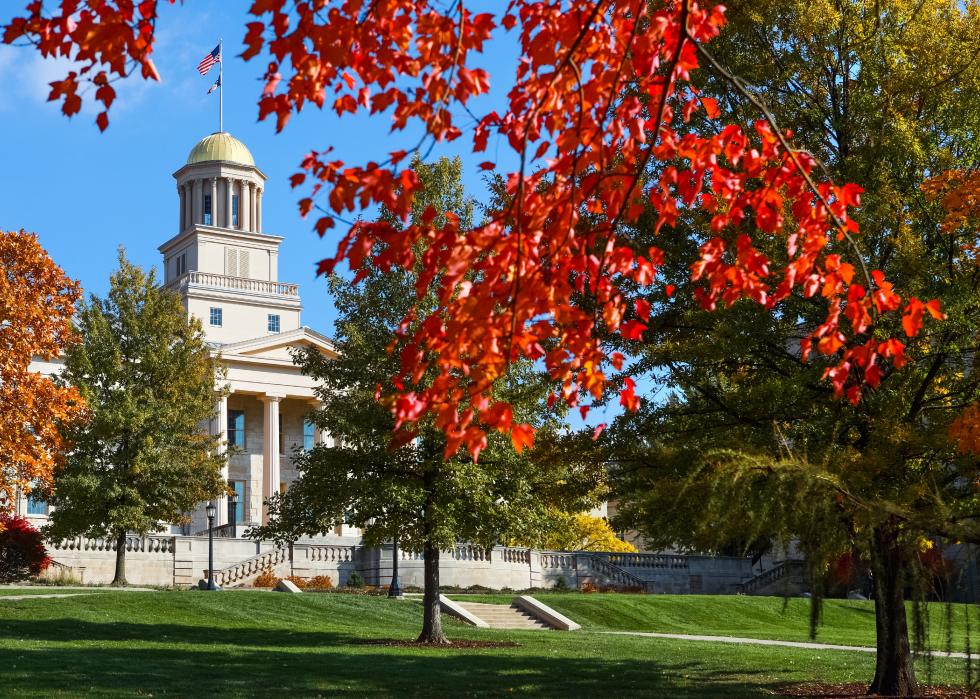
Iowa City, Iowa
- Energy breakdown:
--- Coal: 45.3%
--- Gas: 2.1%
--- Oil: 0.0%
--- Nuclear: 13.0%
--- Hydro: 0.0%
--- Bioenergy (biomass and biofuels): 0.2%
--- Wind: 39.4%
--- Geothermal: 0.0%
--- Solar (photovoltaic and thermal): 0.0%
--- Waste to energy (excluding biomass component): 0.0%
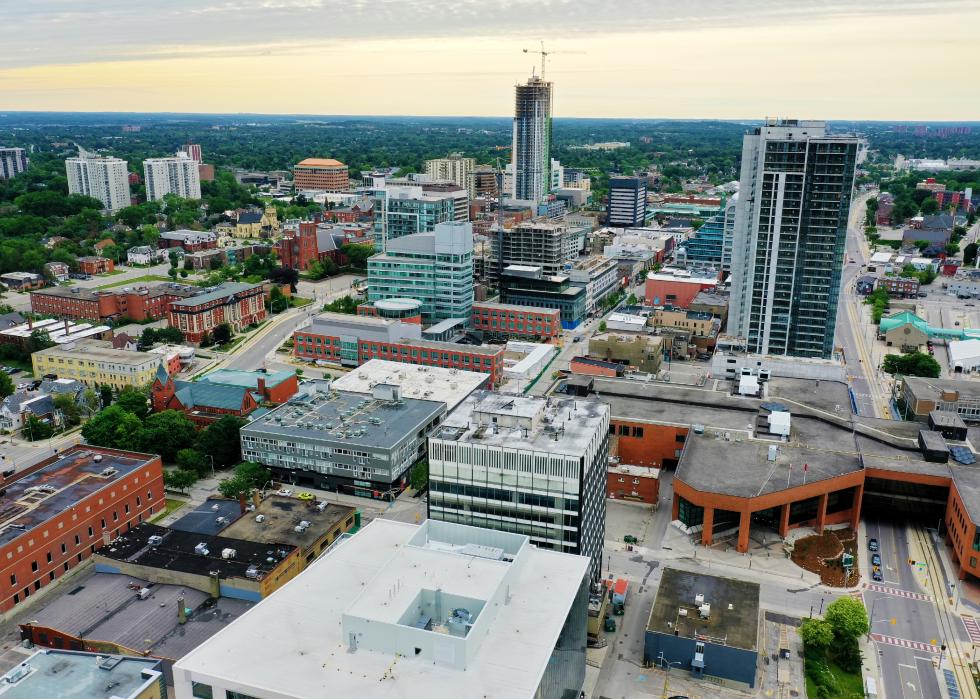
Kitchener, Ontario
- Energy breakdown:
--- Coal: 0.0%
--- Gas: 6.1%
--- Oil: 0.0%
--- Nuclear: 58.2%
--- Hydro: 24.0%
--- Bioenergy (biomass and biofuels): 0.5%
--- Wind: 8.2%
--- Geothermal: 0.0%
--- Solar (photovoltaic and thermal): 0.0%
--- Waste to energy (excluding biomass component): 2.4%

Lexington, Massachusetts
- Energy breakdown:
--- Coal: 0.0%
--- Gas: 0.0%
--- Oil: 0.0%
--- Nuclear: 0.0%
--- Hydro: 0.0%
--- Bioenergy (biomass and biofuels): 0.0%
--- Wind: 94.6%
--- Geothermal: 0.0%
--- Solar (photovoltaic and thermal): 0.0%
--- Waste to energy (excluding biomass component): 5.4%
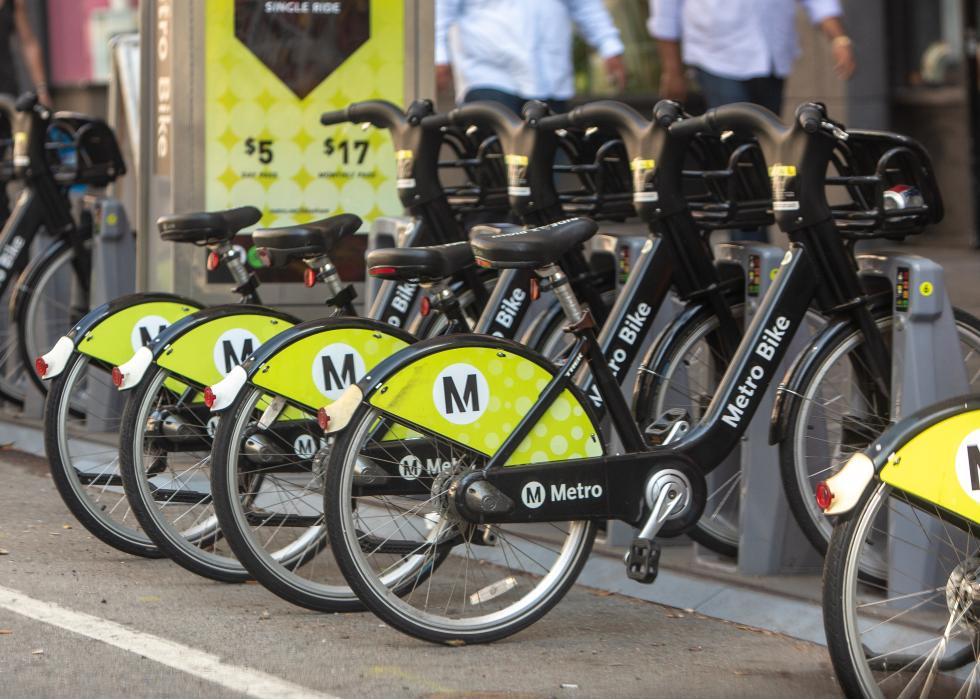
Los Angeles, California
- Energy breakdown:
--- Coal: 21.0%
--- Gas: 27.0%
--- Oil: 0.0%
--- Nuclear: 14.0%
--- Hydro: 6.0%
--- Bioenergy (biomass and biofuels): 0.0%
--- Wind: 10.0%
--- Geothermal: 9.0%
--- Solar (photovoltaic and thermal): 9.0%
--- Waste to energy (excluding biomass component): 12.0%
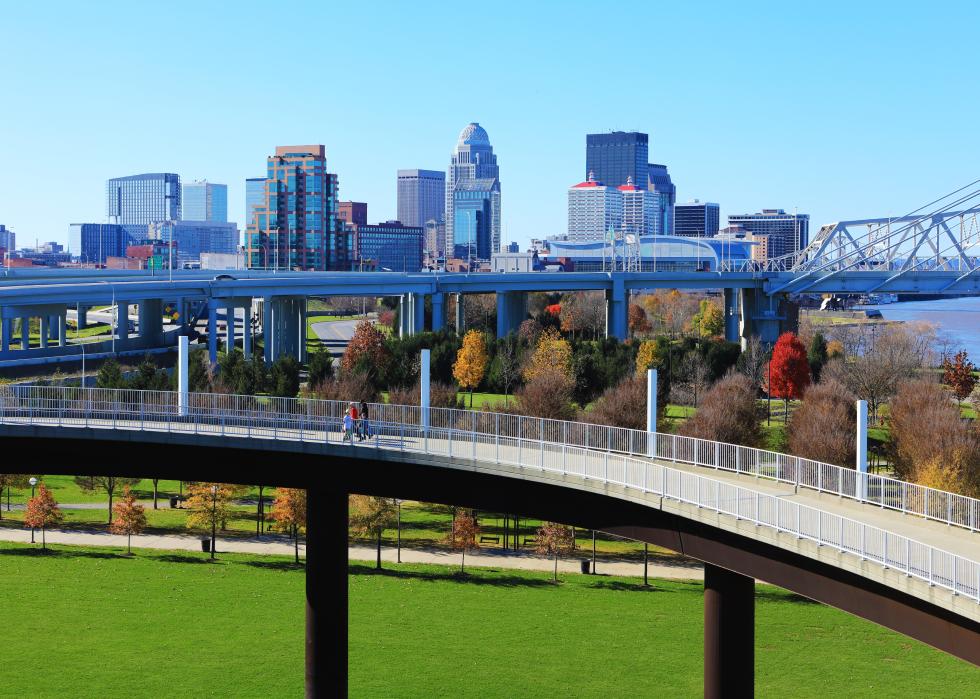
Louisville, Kentucky
- Energy breakdown:
--- Coal: 60.0%
--- Gas: 37.0%
--- Oil: 0.0%
--- Nuclear: 0.0%
--- Hydro: 3.0%
--- Bioenergy (biomass and biofuels): 0.0%
--- Wind: 0.0%
--- Geothermal: 0.0%
--- Solar (photovoltaic and thermal): 0.0%
--- Waste to energy (excluding biomass component): 0.0%
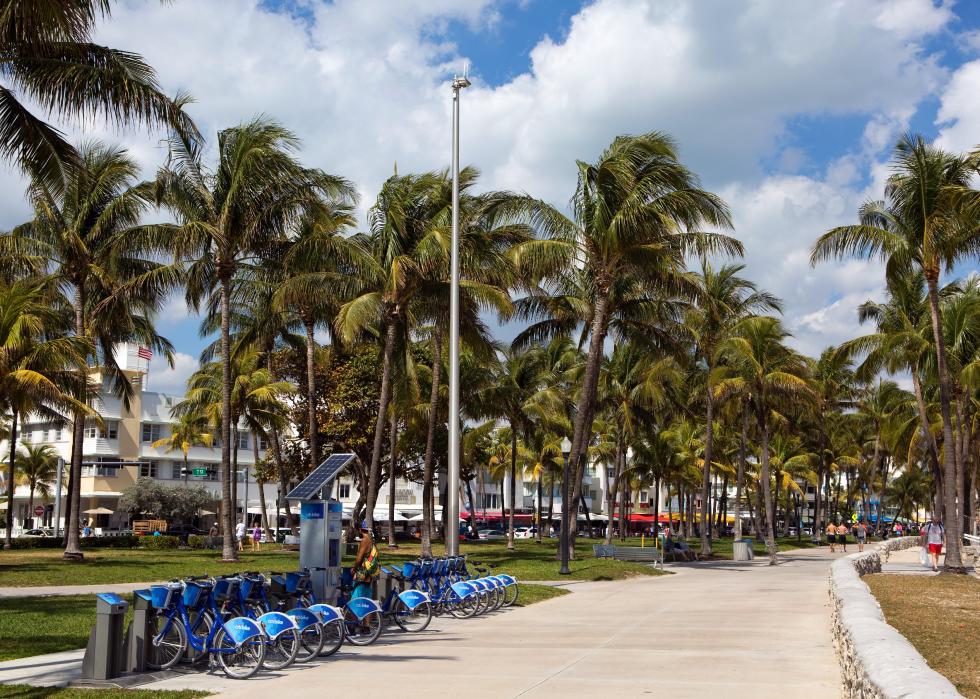
Miami, Florida
- Energy breakdown:
--- Coal: 2.1%
--- Gas: 72.3%
--- Oil: 0.3%
--- Nuclear: 22.3%
--- Hydro: 0.0%
--- Bioenergy (biomass and biofuels): 0.0%
--- Wind: 0.0%
--- Geothermal: 0.0%
--- Solar (photovoltaic and thermal): 0.0%
--- Waste to energy (excluding biomass component): 1.5%
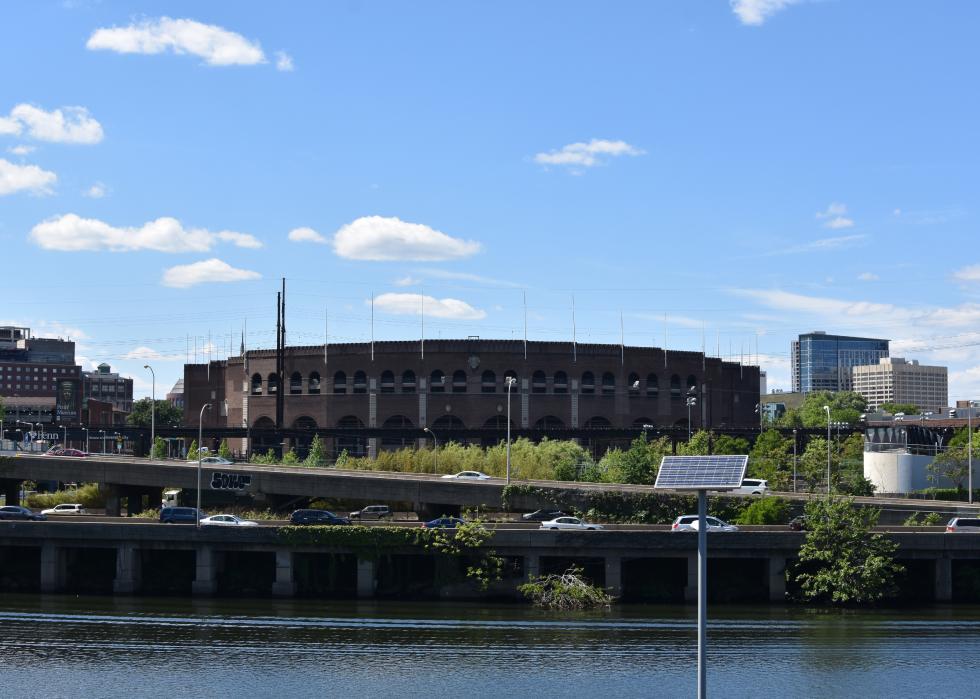
Philadelphia, Pennsylvania
- Energy breakdown:
--- Coal: 17.6%
--- Gas: 38.0%
--- Oil: 0.2%
--- Nuclear: 39.7%
--- Hydro: 0.9%
--- Bioenergy (biomass and biofuels): 1.9%
--- Wind: 1.0%
--- Geothermal: 0.0%
--- Solar (photovoltaic and thermal): 0.0%
--- Waste to energy (excluding biomass component): 0.4%
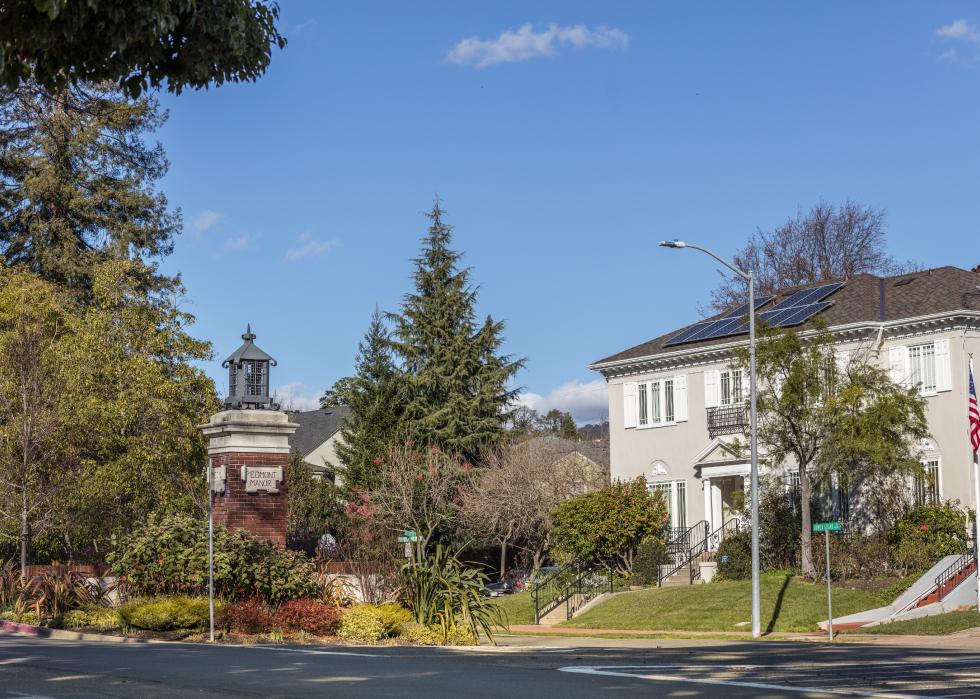
Piedmont, California
- Energy breakdown:
--- Coal: 0.0%
--- Gas: 0.0%
--- Oil: 0.0%
--- Nuclear: 0.0%
--- Hydro: 0.0%
--- Bioenergy (biomass and biofuels): 0.0%
--- Wind: 50.0%
--- Geothermal: 0.0%
--- Solar (photovoltaic and thermal): 0.0%
--- Waste to energy (excluding biomass component): 50.0%
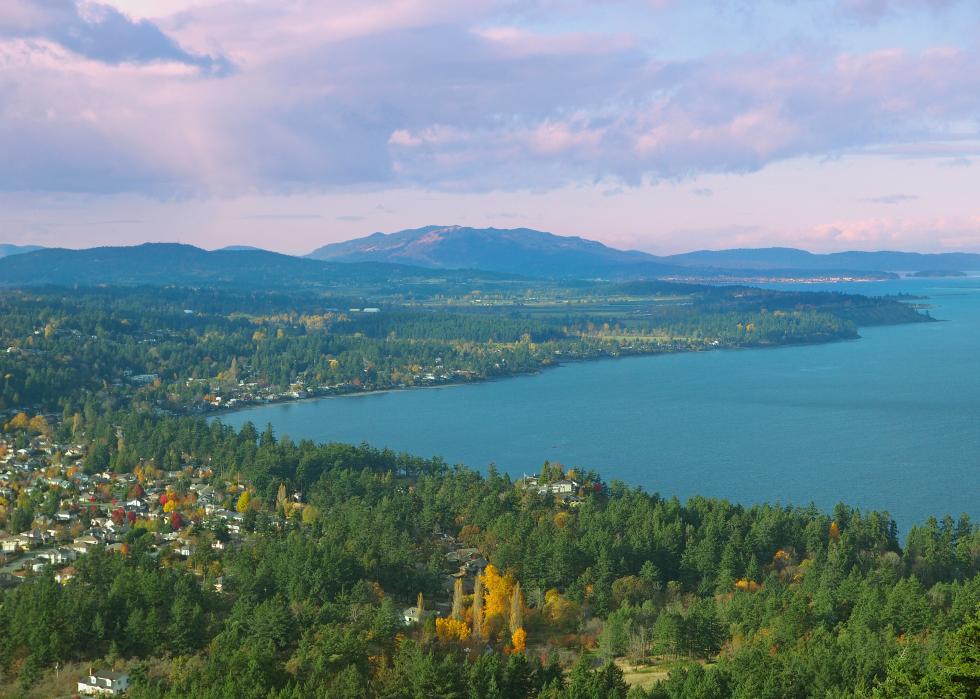
Saanich, British Columbia
- Energy breakdown:
--- Coal: 0.0%
--- Gas: 1.8%
--- Oil: 0.0%
--- Nuclear: 0.0%
--- Hydro: 95.6%
--- Bioenergy (biomass and biofuels): 0.0%
--- Wind: 0.0%
--- Geothermal: 0.0%
--- Solar (photovoltaic and thermal): 0.0%
--- Waste to energy (excluding biomass component): 0.0%
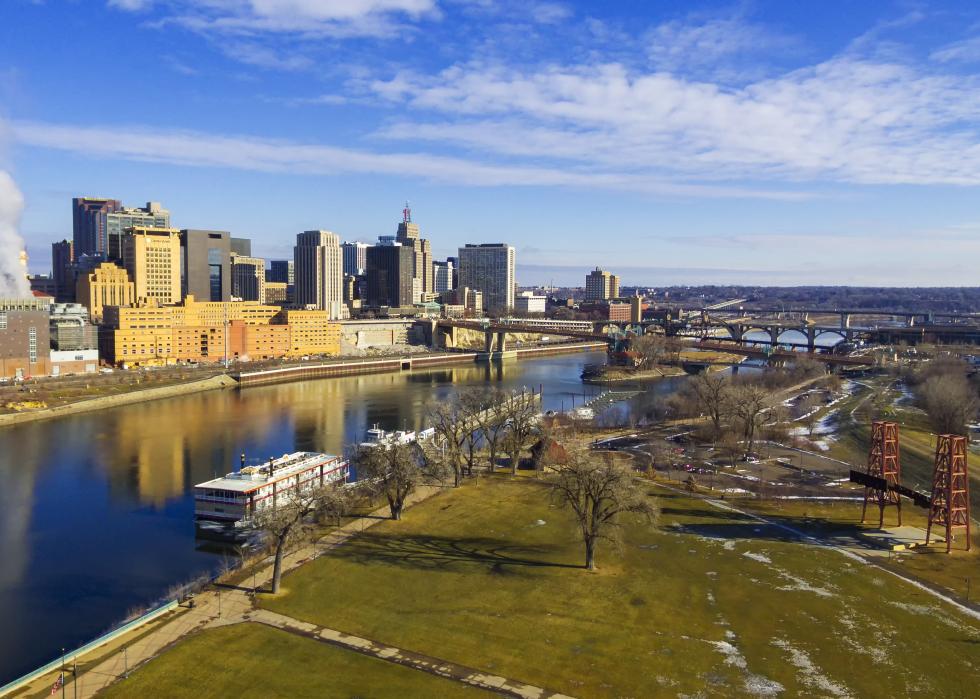
St. Paul, Minnesota
- Energy breakdown:
--- Coal: 23.0%
--- Gas: 23.0%
--- Oil: 0.0%
--- Nuclear: 28.0%
--- Hydro: 6.0%
--- Bioenergy (biomass and biofuels): 2.0%
--- Wind: 15.0%
--- Geothermal: 0.0%
--- Solar (photovoltaic and thermal): 0.0%
--- Waste to energy (excluding biomass component): 3.0%
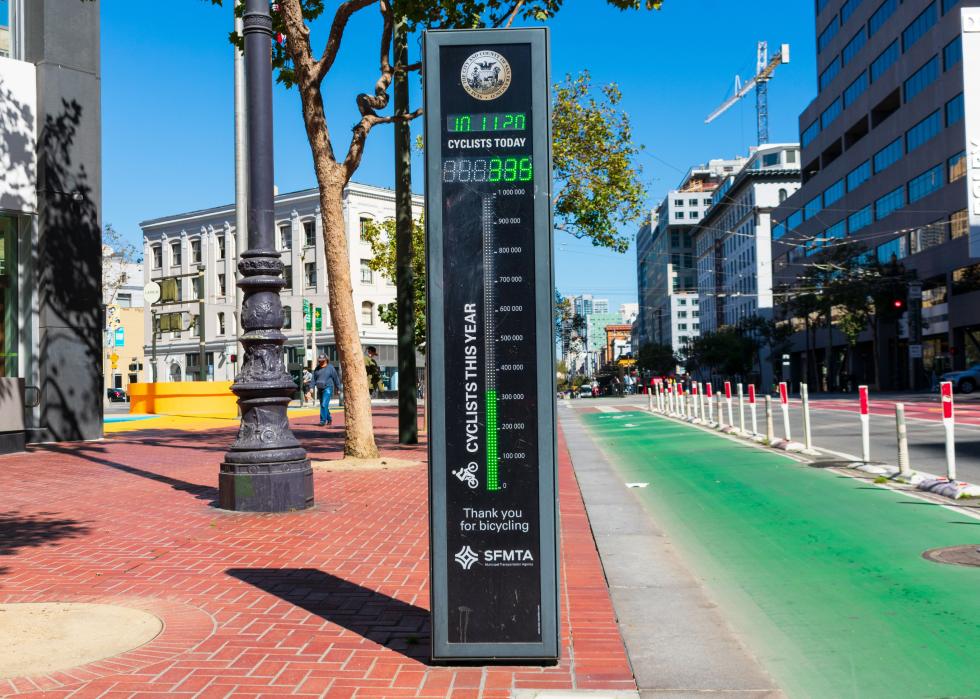
San Francisco, California
- Energy breakdown:
--- Coal: 0.0%
--- Gas: 1.0%
--- Oil: 0.0%
--- Nuclear: 10.0%
--- Hydro: 50.0%
--- Bioenergy (biomass and biofuels): 1.0%
--- Wind: 18.0%
--- Geothermal: 6.0%
--- Solar (photovoltaic and thermal): 6.0%
--- Waste to energy (excluding biomass component): 6.0%
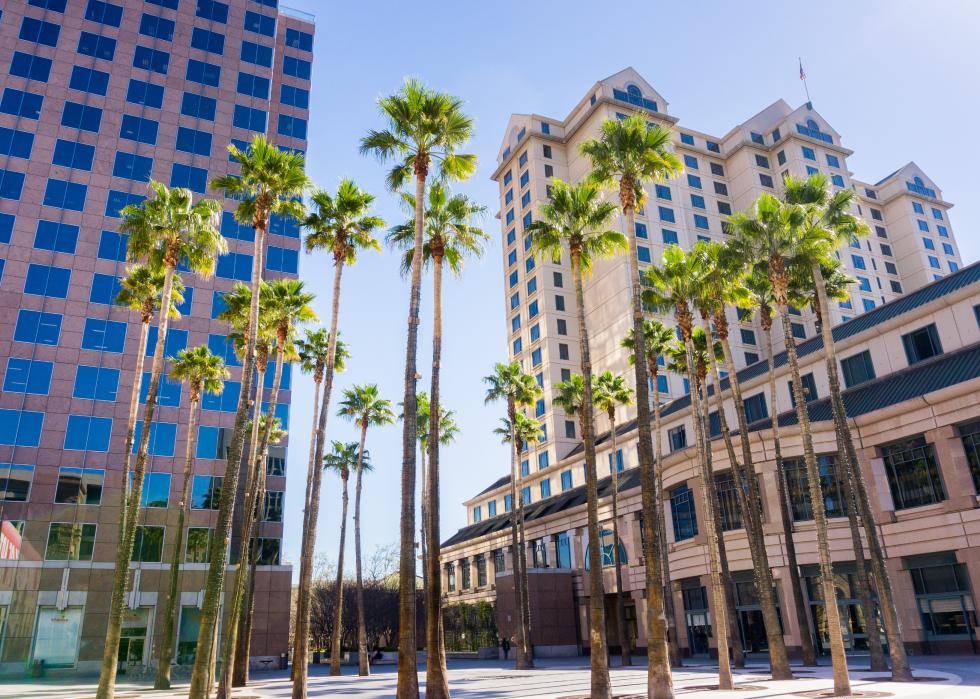
San Jose, California
- Energy breakdown:
--- Coal: 0.0%
--- Gas: 0.0%
--- Oil: 0.0%
--- Nuclear: 13.0%
--- Hydro: 31.0%
--- Bioenergy (biomass and biofuels): 2.0%
--- Wind: 24.0%
--- Geothermal: 3.0%
--- Solar (photovoltaic and thermal): 3.0%
--- Waste to energy (excluding biomass component): 17.0%
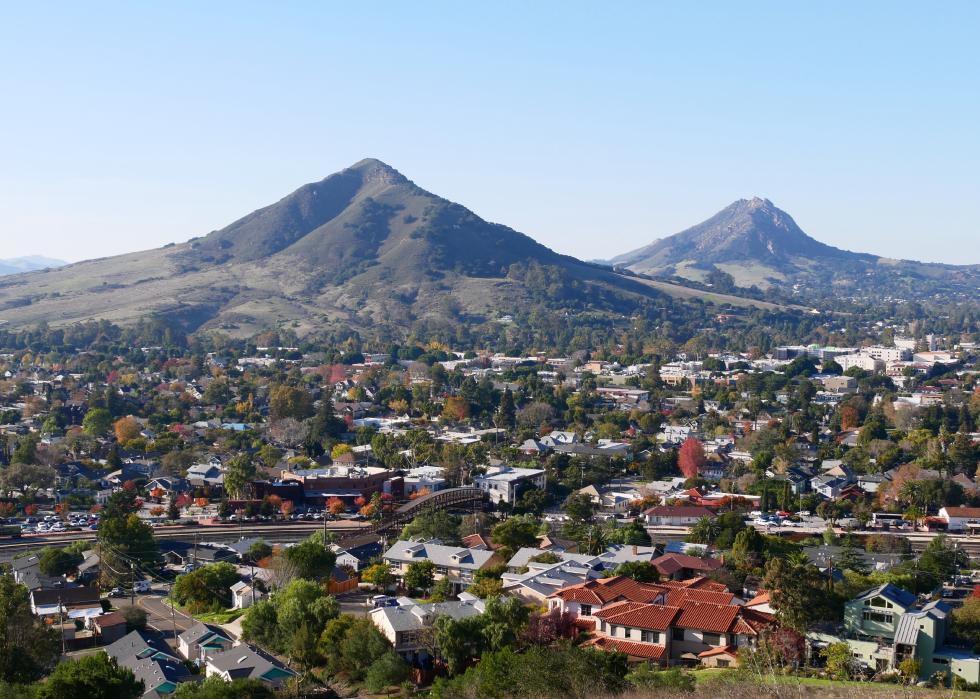
San Luis Obispo, California
- Energy breakdown:
--- Coal: 0.0%
--- Gas: 0.0%
--- Oil: 0.0%
--- Nuclear: 0.0%
--- Hydro: 66.0%
--- Bioenergy (biomass and biofuels): 0.0%
--- Wind: 11.0%
--- Geothermal: 12.0%
--- Solar (photovoltaic and thermal): 12.0%
--- Waste to energy (excluding biomass component): 11.0%

Santa Monica, California
- Energy breakdown:
--- Coal: 1.0%
--- Gas: 10.9%
--- Oil: 0.0%
--- Nuclear: 2.9%
--- Hydro: 5.3%
--- Bioenergy (biomass and biofuels): 1.5%
--- Wind: 9.4%
--- Geothermal: 1.5%
--- Solar (photovoltaic and thermal): 1.5%
--- Waste to energy (excluding biomass component): 65.1%
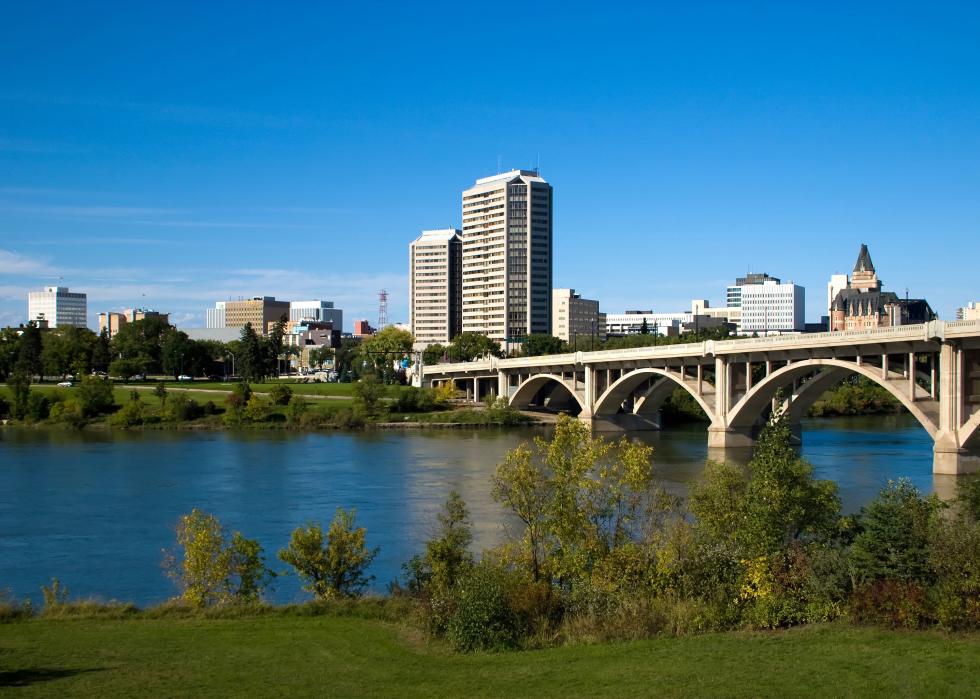
Saskatoon, Saskatchewan
- Energy breakdown:
--- Coal: 31.0%
--- Gas: 45.0%
--- Oil: 0.0%
--- Nuclear: 0.0%
--- Hydro: 18.0%
--- Bioenergy (biomass and biofuels): 0.0%
--- Wind: 5.0%
--- Geothermal: 0.0%
--- Solar (photovoltaic and thermal): 0.0%
--- Waste to energy (excluding biomass component): 0.0%
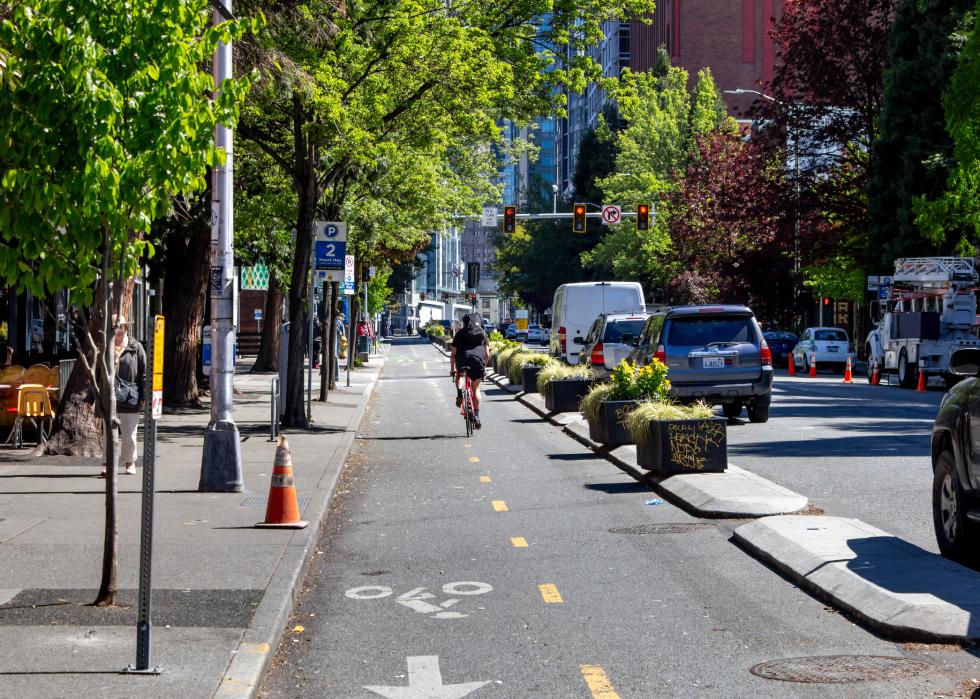
Seattle, Washington
- Energy breakdown:
--- Coal: 0.0%
--- Gas: 0.0%
--- Oil: 0.0%
--- Nuclear: 5.0%
--- Hydro: 84.0%
--- Bioenergy (biomass and biofuels): 1.0%
--- Wind: 4.0%
--- Geothermal: 0.0%
--- Solar (photovoltaic and thermal): 0.0%
--- Waste to energy (excluding biomass component): 0.0%
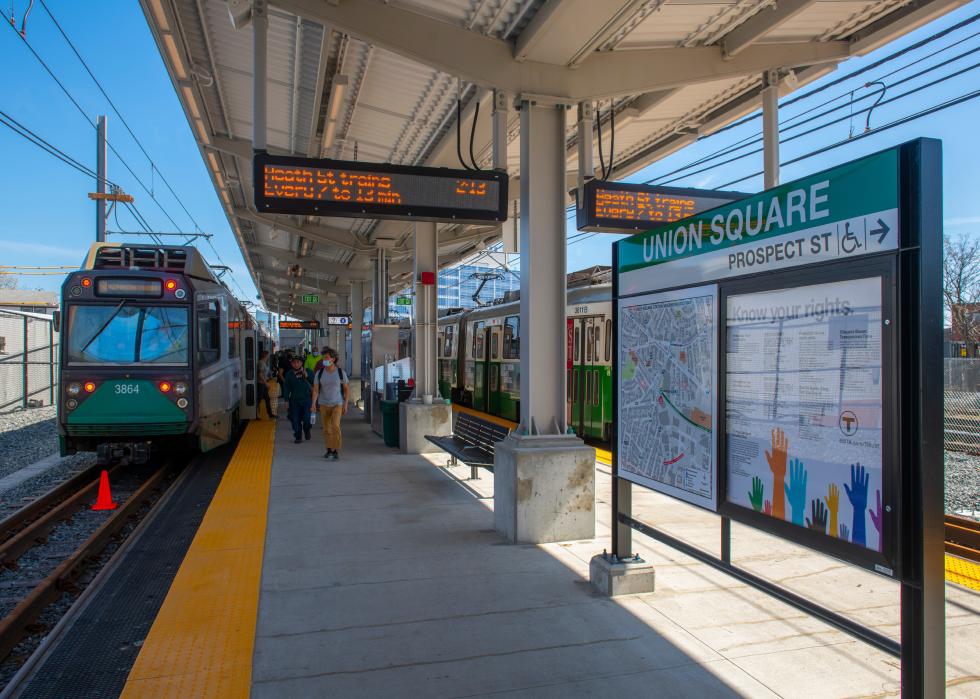
Somerville, Massachusetts
- Energy breakdown:
--- Coal: 0.5%
--- Gas: 48.5%
--- Oil: 0.2%
--- Nuclear: 30.5%
--- Hydro: 8.9%
--- Bioenergy (biomass and biofuels): 2.5%
--- Wind: 3.6%
--- Geothermal: 0.0%
--- Solar (photovoltaic and thermal): 0.0%
--- Waste to energy (excluding biomass component): 1.7%
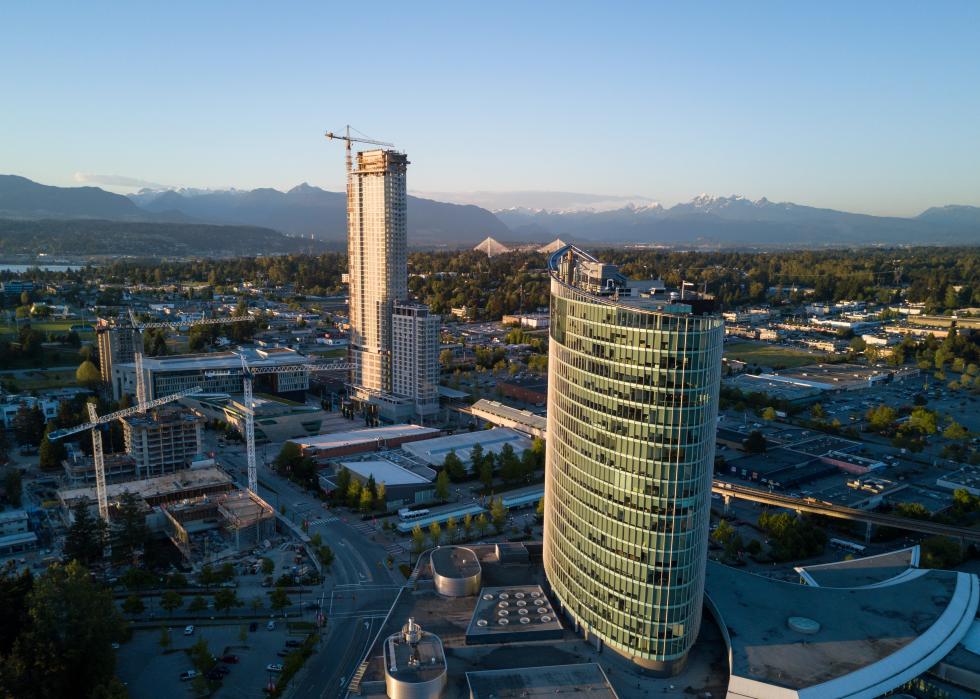
Surrey, British Columbia
- Energy breakdown:
--- Coal: 0.0%
--- Gas: 2.0%
--- Oil: 1.0%
--- Nuclear: 0.0%
--- Hydro: 90.0%
--- Bioenergy (biomass and biofuels): 6.0%
--- Wind: 1.0%
--- Geothermal: 0.0%
--- Solar (photovoltaic and thermal): 0.0%
--- Waste to energy (excluding biomass component): 0.0%
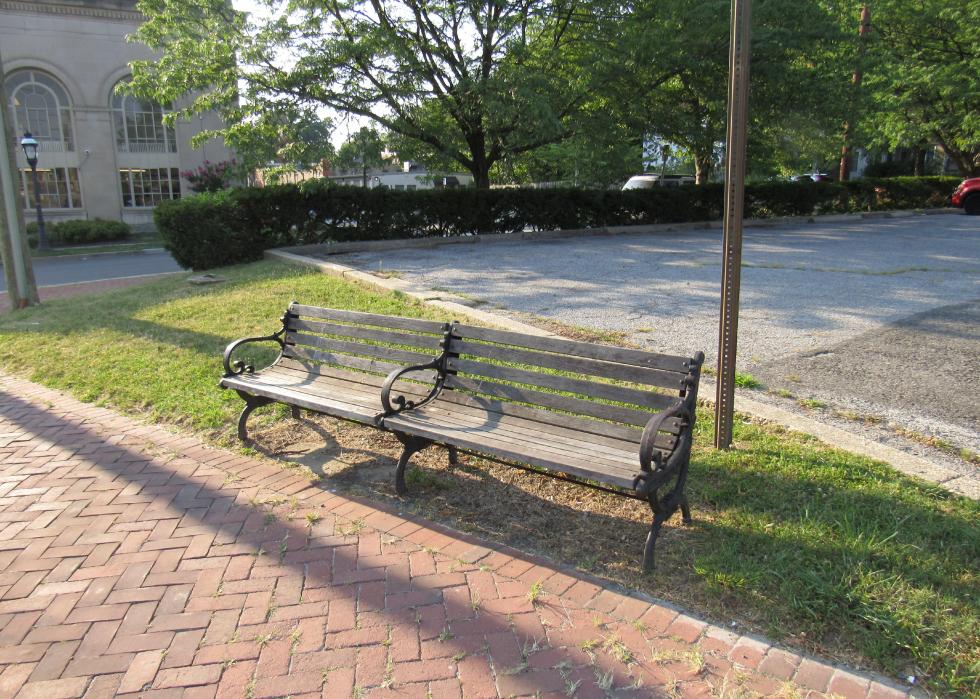
Takoma Park, Maryland
- Energy breakdown:
--- Coal: 29.8%
--- Gas: 28.7%
--- Oil: 0.3%
--- Nuclear: 35.3%
--- Hydro: 1.4%
--- Bioenergy (biomass and biofuels): 0.3%
--- Wind: 3.1%
--- Geothermal: 0.0%
--- Solar (photovoltaic and thermal): 0.0%
--- Waste to energy (excluding biomass component): 0.3%
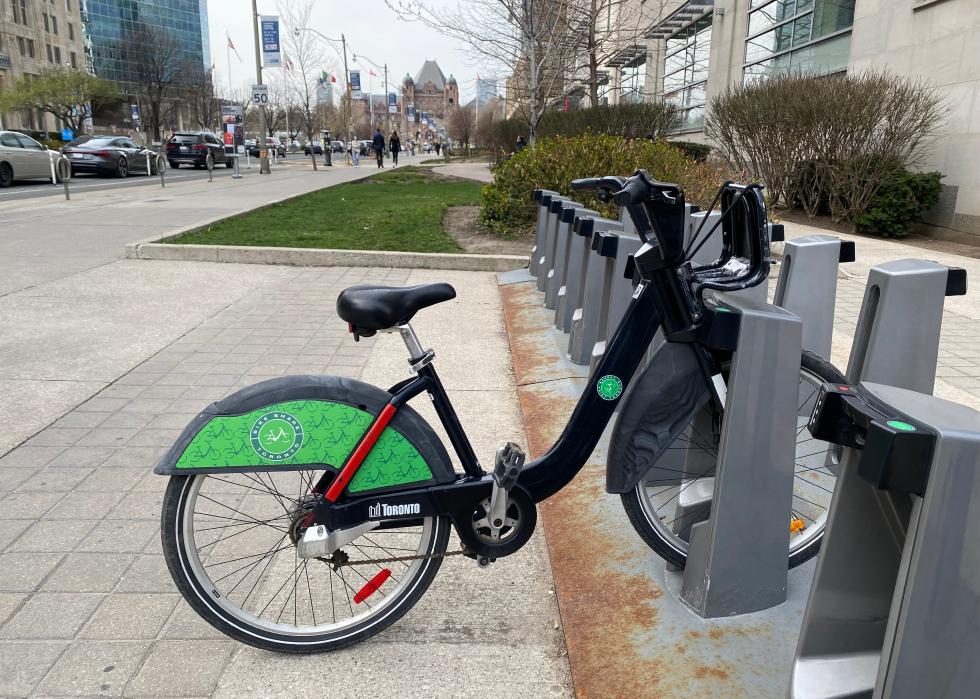
Toronto, Ontario
- Energy breakdown:
--- Coal: 0.0%
--- Gas: 29.0%
--- Oil: 0.0%
--- Nuclear: 34.0%
--- Hydro: 23.0%
--- Bioenergy (biomass and biofuels): 1.0%
--- Wind: 12.0%
--- Geothermal: 0.0%
--- Solar (photovoltaic and thermal): 0.0%
--- Waste to energy (excluding biomass component): 1.0%
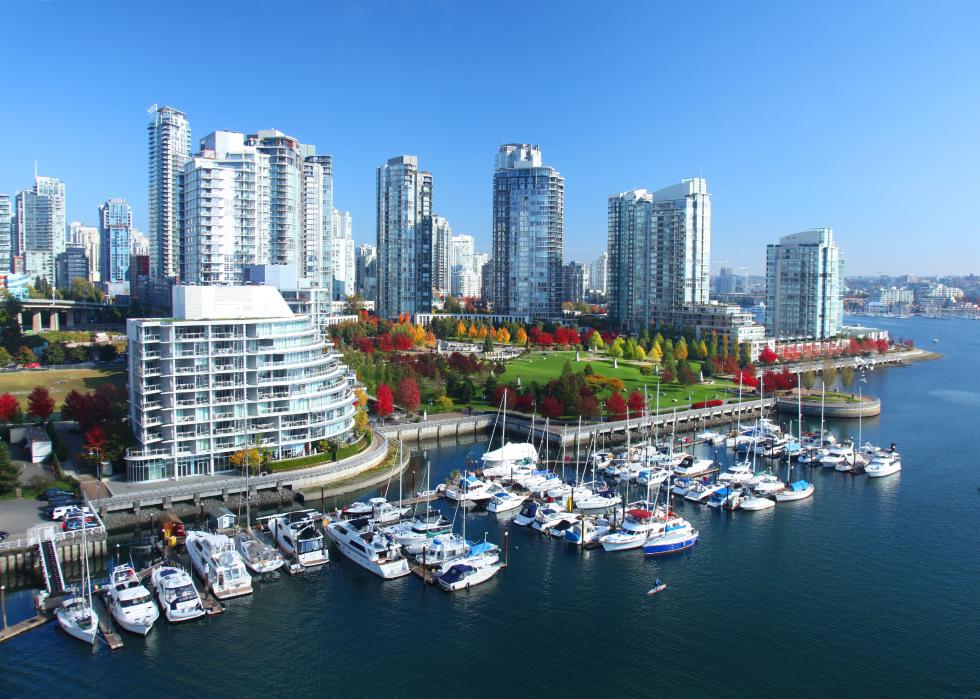
Vancouver, British Columbia
- Energy breakdown:
--- Coal: 0.0%
--- Gas: 2.0%
--- Oil: 0.0%
--- Nuclear: 0.0%
--- Hydro: 91.0%
--- Bioenergy (biomass and biofuels): 6.0%
--- Wind: 1.0%
--- Geothermal: 0.0%
--- Solar (photovoltaic and thermal): 0.0%
--- Waste to energy (excluding biomass component): 0.0%

Washington D.C.
- Energy breakdown:
--- Coal: 12.3%
--- Gas: 45.7%
--- Oil: 0.1%
--- Nuclear: 36.9%
--- Hydro: 1.6%
--- Bioenergy (biomass and biofuels): 1.6%
--- Wind: 0.9%
--- Geothermal: 0.0%
--- Solar (photovoltaic and thermal): 0.0%
--- Waste to energy (excluding biomass component): 0.6%



